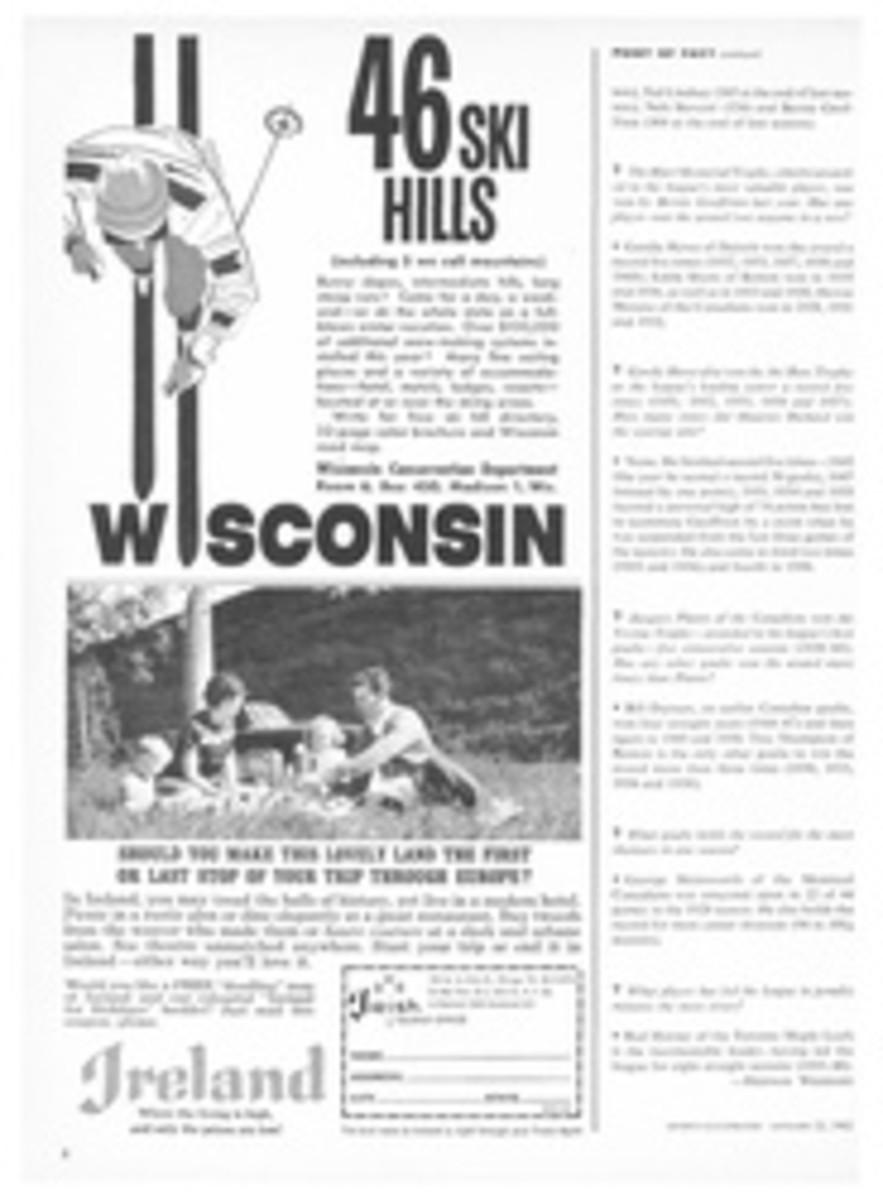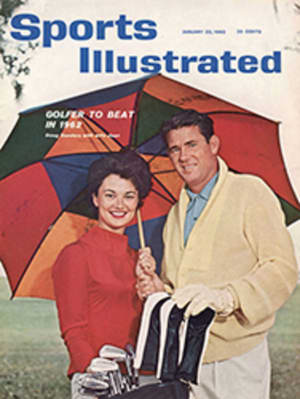
Vintage year for the gadgeteer
In the New York Coliseum, where the 52nd National Motor Boat Show is in full swing this week, all that glitters is chrome. The four floors of the massive hall are jammed with an astonishing variety of metal-trimmed floating objects intended for every phase of aquatic activity from joyriding and fishing and skiing and racing across oceans to just sitting in placid gunkholes. The sum total is almost an embarrassment of riches.
Despite the amazing variety of exhibits, however, there is little that is startlingly new. In the fleet of 450 boats, only 40% are of traditional wood construction, despite a slight reduction from last year in the percentage of boats made of fiber glass, from 49% to 43%. This is partially explained by larger numbers of aluminum and inflatable or folding rubber hulls—kayaks and the like—in the smaller-size craft. But the trend to bigger glass boats continues: the 41-foot Hatteras fiber-glass cruiser is the largest of this material ever displayed in a boat show. And the auxiliary sailing fleet is almost unanimously plastic.
As forecast last year, the inboard-outboards have become increasingly popular. Three of the outboard manufacturers, Outboard Marine, Kiekhaefer and West Bend, are producing their own inboard-engine/outboard-drive units, and Outboard Marine is adding a fiberglass hull of its own manufacture tailored to fit the new power unit.
It is in the specialized equipment, displayed in the estuaries remote from the fleet of larger craft on the main floor, that the hardy explorer will find the most interesting new products. Less than a decade ago, equipment intended purely for the boating enthusiast was a specialty item produced by only a handful of companies. Now gadget-browsing is both pleasurable and rewarding, as a considerable segment of American industry is focusing on these vital accessories.
Among devices of interest to the offshore sailor is an improved version of the type of flashing electronic distress flare that saved the life of Ocean Racer John Weston when he was washed overboard during the 1960 Bermuda race. Displayed by Crow's-nest, the Transralite ($89.50) has a brilliant neon flasher visible to the horizon from deck level and at distances of 30 to 50 miles, depending on visibility and the height of a search plane. It also transmits a two-tone sputnik-type radio beep on 2182 kc., the international distress frequency, which can be homed on by most radio direction finders. Attached to a life ring, the Transralite turns upright the moment it hits the water and an automatic gravity switch starts the transmitter and sets the light flashing.
The same booth features the answer to a lazy fisherman's prayer, in the portable 12-volt, battery-powered Motor-Guide for trolling ($177.50). Clamped to the gunwale or transom, the small electric motor is controlled by a pedal that turns the boat left or right, governs engine speed and can reverse. This leaves the hands free for playing a fish and, if the fish aren't biting, eliminates the necessity for abandoning a reclining position.
The exhibit of Ratsey and Lapthorn, the world's oldest and best-known sail-makers, is enhanced by a selection of Barient winches. Slightly cheaper this year, and better than ever, these winches combine power with the precision machining of fine watches. Not only is there a new line of reel halyard winches to solve an equipment deficiency in the past life of every sailor, but there is also the new #28 two-speed deck winch for cruiser-racers of the 40-foot class (in chrome, with ratchet handle, priced at $775, alas!), so fast in the first speed and so powerful in low gear that a rival crew not similarly equipped will be at a handicap in a tacking duel.
Coastwise navigation of boats of any size or type can be made simpler by two British units imported by Triton Marine Products. One is a tiny radio direction finder, called the Heron, whose antenna unit contains a compass ($350). Because it is small enough to be hand-held, the Heron is free of the directional errors that plague the big fixed units when a boat begins to heel. A beat-frequency oscillator permits reception of the marine navigational radio beams known as Consolan. Smaller than a carton of cigarettes, its sensitivity and directional qualities allow it to function impressively even in the Coliseum. A companion unit is a portable depth finder ($380), which can be carried in a dinghy for checking an unfamiliar harbor or looking around for likely fishing holes. Another excellent Triton product is an audio transceiver, which functions both as a loudspeaker to hail distant vessels or a hearing aid to pick up distant sounds. Hooked up with a scanning motor, the transceiver will quest to both sides of the bow like a hound on scent, while a dial in the wheel-house shows the bearing of the buoy being sought.
Red right returning
Then, once the buoy is found, an item displayed on the racks of Mighty-Mac Boatwear will show the skipper what to do. In addition to a line of code-flag shirts (SI, Feb. 20, 1961), now expanded to include the same cheerful pattern in foul-weather gear and warm hooded jackets, there is a red-and-black zippered jacket for those new owners who might forget the rules of the road. Worn with the black half to starboard leaving a harbor, the jacket is turned inside out to reverse the colors coming home, as a reminder of the old seamen's doggerel that buoys are passed "red right returning." As nearly as I could see, the only thing missing was a gadget to tell the skipper when to reverse his jacket.

